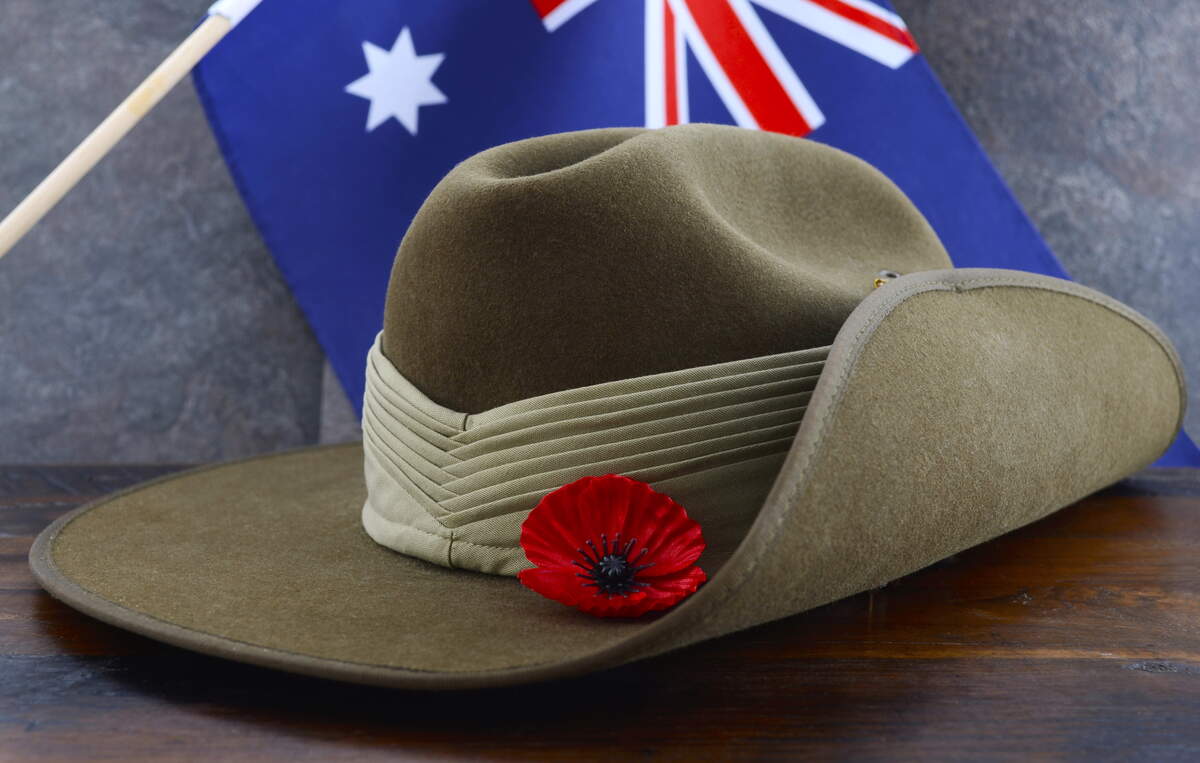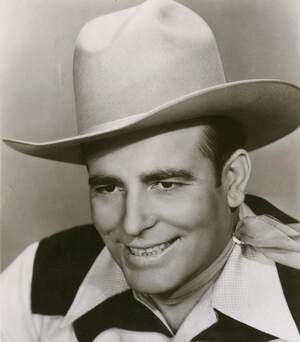

Anzac Day
Observed
on April 30th (1915)
on April 25th (1916)
on April 23rd (1917)
annually on April 25th (since 1918)
Dates
Hashtags
Sources
Anzac Day is a public holiday and national day of remembrance in Australia, New Zealand, and Tonga. It recognizes servicemen and women in these countries who have served in all conflicts, wars, and peacekeeping operations, and servicemembers who have given their lives. In 1916, it was officially designated to take place on April 25 each year. It has gone through many changes since it was first observed.
ANZAC is an acronym for the Australian and New Zealand Army Corps, a group of several divisions that were created early in the Great War (World War I). In December 1914, the Australian Imperial Force and the New Zealand Expeditionary Force arrived in Egypt and were put under the command of Lieutenant-General William Birdwood. What at first was called the Australasian Corps soon became ANZAC.
On April 25, 1915, Australian and New Zealand ANZAC soldiers saw action for the first time, as part of the Allied expedition to capture the Gallipoli peninsula. Landing on Gallipoli at a cove that is now known as Anzac Cove, their goal while capturing the peninsula was to capture the Dardanelles Strait and open a sea route to the Bosphorus Strait and the Black Sea. It became a stalemate, with strong resistance from the Ottoman Turks, and lasted eight months. At the end of 1915, the Allied forces evacuated and the Ottoman Turks still held the peninsula. Over 8,000 Australians and 2,779 New Zealanders died in the campaign, with a total of 44,000 dead from the British Empire and France. Despite holding the peninsula, 87,000 Ottoman Turks perished. At first, just the Australian and New Zealand soldiers fighting on the peninsula were known as ANZACs, but eventually, any Australian or New Zealand soldiers were given the moniker. The term continued to be used throughout World War I and in World War II and Vietnam.
On April 29, 1915, the governor of New Zealand received word of the landing, and a demonstration on the grounds of Parliament with four or five thousand people took place. The following day, April 30, a half-day holiday with public recognition of the landing at Gallipoli was held. It was observed at government offices, flags were flown, patriotic meetings were held, descriptions of the landings were read, and newspapers heralded the bravery of the soldiers.
Anzac Day became a half-day holiday in New Zealand on April 25, 1916. The government declared the whole day a holiday in 1921, and a full public holiday in 1922, with the day being observed as if it were a Sunday. During the 1920s, public war memorials were built in New Zealand, which became ceremonial sites, replacing the churches and town halls that had been used, and Anzac Day became less overtly religious. The laying of wreaths became a more important part of the day, and there were fewer speeches and hymns.
In 1939, the same year war broke out in Europe, a dawn ceremony and parade started being held, the idea taken from how the day was observed in Australia. As World War I and World War II were linked together through Anzac Day, public interest in the day grew. In 1949, legislation ensured that the day would never be "Mondayised"—or be held on the Monday closest to the actual date, instead always being on April 25. (This was changed back in 2013.) The legislation also designated that the holiday be in honor of all overseas wars that New Zealanders fought in. At the time this meant World War I, World War II, and the South African War.
Returned and Services' Association (RSA) (originally Returned Soldiers' Association) clubhouses were opened for servicemembers, and the day took on the air of an annual reunion. Starting in 1967, hotels were allowed to open so that the public, not just servicemembers, had a place to gather together, and shops were soon opened too.
Over time, the aims of the day began to shift. In the beginning, the landings evoked national pride, with New Zealanders wanting a remembrance for them. It became a day to rally support for the war effort and for a public expression of grief. As time went on, the day began to shift more from one of mourning to commemoration. Today Anzac Day commemorates New Zealanders killed in war and honors all servicemen and women returning home.
In Australia, Acting Prime Minister George Pearce named April 25 as Anzac Day in 1916, and it has remained an important day for Australians since. In the 1920s, ceremonies were held throughout the country and all Australian states designated Anzac Day as a public holiday. In the 1930s, it started to shift from being a day solely focused on mourning, to being a day where veterans commemorate their war service and sacrifices.
Australian World War II veterans joined in parades around the country in the 1940s, and veterans from other wars, like the Korean and Vietnam Wars, joined in parades in the decades that followed. However, some veterans returning from Vietnam in the 1960s and '70s felt their service wasn't appreciated, so they chose not to participate in the day's ceremonies. A welcome home parade on October 3, 1987, helped to turn the tide of these attitudes. Ceremonies and marches in Australia now include Australian veterans from all conflicts, including Vietnam, Iraq, Afghanistan, Somalia, Rwanda, and Timor-Leste, as well as veterans from Allied countries.
Anzac Day is often observed in other countries. For example, the first anniversary of the landing at Gallipoli was not only marked in Australia and New Zealand but also in England. Over 2,000 Australians and New Zealanders marched through central London to Westminster Abbey, where a service was attended by King George V, Prime Minister Billy Hughes, and Allied military leaders. Local commemoration services were held in Britain, France, and Egypt.
In Australia, New Zealand, Tonga, and other places where Anzac Day is observed, it is usually marked with commemorative services at war memorials at dawn, followed by marches. The services take place at dawn for two reasons: because that's when the landings at Gallipoli took place, and because dawn is related to the Australian Army's stand-to routine, when front-line soldiers guarded their posts at dawn, a time when attacks were often launched. Following World War II, many veterans missed the comradeship they felt during the stand-to routine, and thus their preferred form of remembrance was a dawn ceremony. The soldiers often march to the memorial before the services start. The services often include an intro, hymns, prayers, an address, laying of wreaths, a recitation, the Last Post, a period of silence, the Rouse or the Reveille, and the country's national anthem.
Later in the day, there are marches or parades, where current and former servicemembers take part, donning their medals and marching behind banners and standards. They are sometimes joined by cadets and by members from other community groups, such as the Red Cross. These parades may end at a local war memorial, where there may be another service and laying of wreaths, but this may be a more public event than the dawn service. Following the parade and the ceremony, veterans often go to RSA clubhouses for refreshments and fellowship. The RSA and local governments play a large role in organizing events for the day.
There are a number of other traditions associated with Anzac Day. Some servicemembers and observers travel to Gallipoli for it. For many years, a rugby match, the Anzac Test, was held between Australia and New Zealand. The phrase the "spirit of Anzac" is commonly used on the day. Anzac biscuits are more readily available.
How to Observe Anzac Day
- Attend a commemorative service at dawn. If you are a current or former servicemember, you could march to the location of the service, usually a war memorial, with other servicemembers before it begins.
- March in or view an Anzac Day parade, and attend any ceremony following it.
- If you are a veteran, follow the parade and ceremony by going to an RSA clubhouse for refreshments and fellowship. If you are not a veteran, gather at another public location.
- Attend Anzac Day events in Australia, New Zealand, or Tonga.
- Attend an Anzac Day event in the United States.
- Travel to Gallipoli, Turkey, or to another country to attend an Anzac Day event.
- Organize an Anzac Day event.
- Buy or make Anzac biscuits to eat.
- Learn more Anzac Day and Anzacs by exploring sites like the Anzac Portal or the Anzac Day Collection or by reading a book.





















